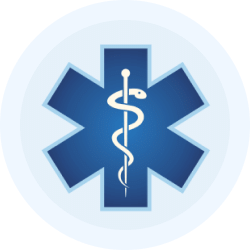BMAT Exam > BMAT Videos > Crash Course for BMAT > Global Warming & Climate Change
Global Warming & Climate Change Video Lecture | Crash Course for BMAT
FAQs on Global Warming & Climate Change Video Lecture - Crash Course for BMAT
| 1. What is global warming and climate change? |  |
Ans. Global warming refers to the long-term increase in Earth's average surface temperature, primarily due to the buildup of greenhouse gases in the atmosphere. Climate change, on the other hand, encompasses a broader range of changes in the Earth's climate patterns, including temperature, precipitation, and wind patterns, as a result of global warming.
| 2. What are greenhouse gases and how do they contribute to global warming? |  |
Ans. Greenhouse gases are gases that trap heat in the Earth's atmosphere, leading to the greenhouse effect. The main greenhouse gases include carbon dioxide (CO2), methane (CH4), and nitrous oxide (N2O). These gases absorb and re-emit infrared radiation, preventing it from escaping into space. The increased concentration of greenhouse gases in the atmosphere, primarily from human activities such as burning fossil fuels and deforestation, enhances the greenhouse effect and leads to global warming.
| 3. What are the main causes of global warming and climate change? |  |
Ans. The main causes of global warming and climate change are human activities that release greenhouse gases into the atmosphere. These activities include the burning of fossil fuels for energy, industrial processes, deforestation, and agriculture. Additionally, natural factors such as volcanic eruptions and variations in solar radiation can also influence the Earth's climate, but their contribution is relatively smaller compared to human-induced factors.
| 4. What are the potential impacts of global warming and climate change? |  |
Ans. Global warming and climate change can have various impacts on the environment, ecosystems, and human societies. Some of the potential impacts include rising sea levels, more frequent and intense extreme weather events (such as hurricanes and heatwaves), changes in precipitation patterns, disruptions to ecosystems and biodiversity, and impacts on human health, agriculture, and water resources. These impacts can vary across different regions and are expected to worsen if significant measures are not taken to mitigate and adapt to climate change.
| 5. What can individuals and governments do to address global warming and climate change? |  |
Ans. Individuals can contribute to addressing global warming and climate change by adopting sustainable practices such as reducing energy consumption, using renewable energy sources, recycling, and making environmentally conscious choices. Governments play a crucial role in implementing policies and regulations to limit greenhouse gas emissions, promoting renewable energy, investing in sustainable infrastructure, and fostering international cooperation to mitigate and adapt to climate change. Additionally, raising awareness, education, and supporting research and innovation are essential in finding long-term solutions to this global challenge.
Related Searches














